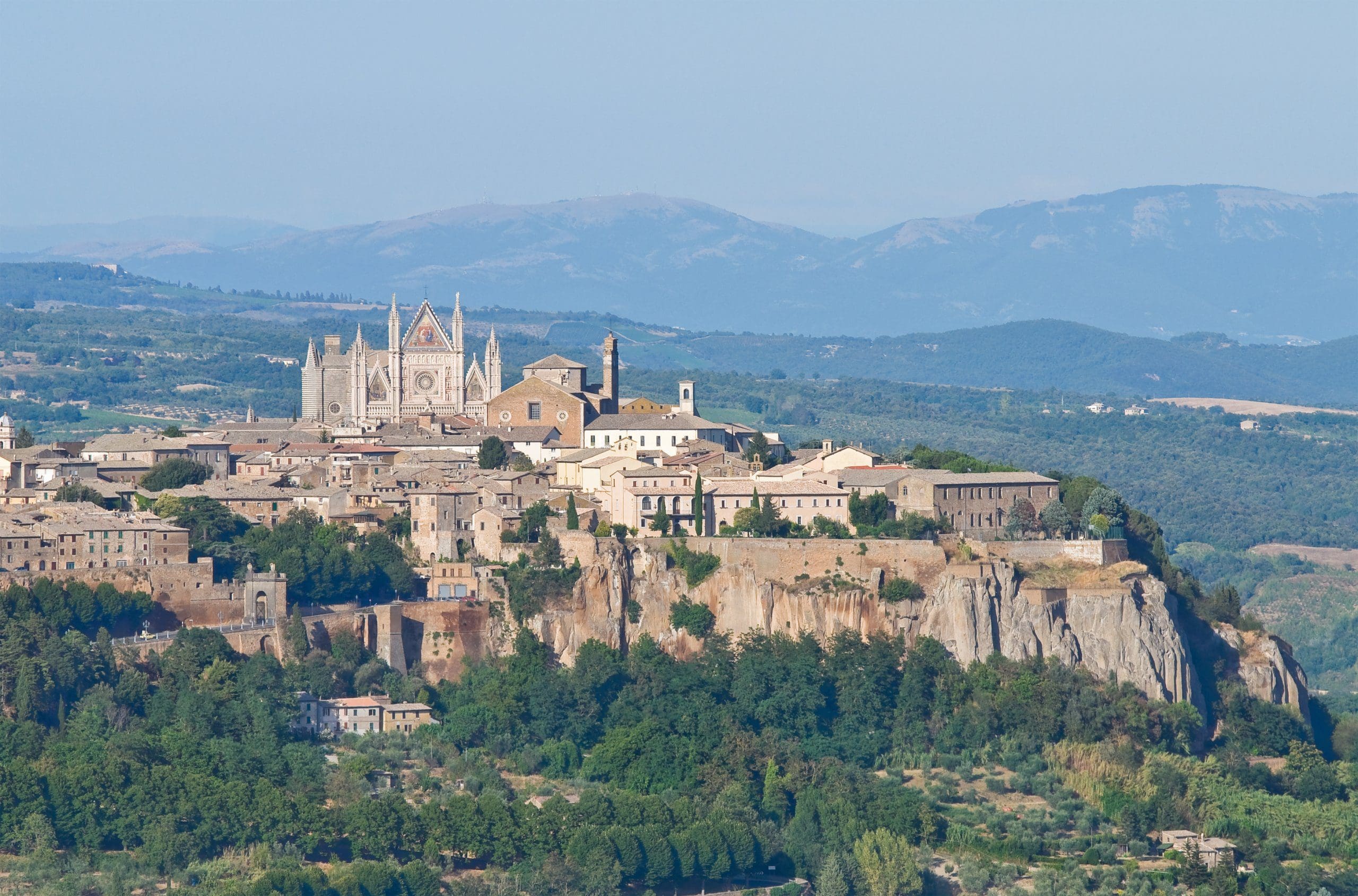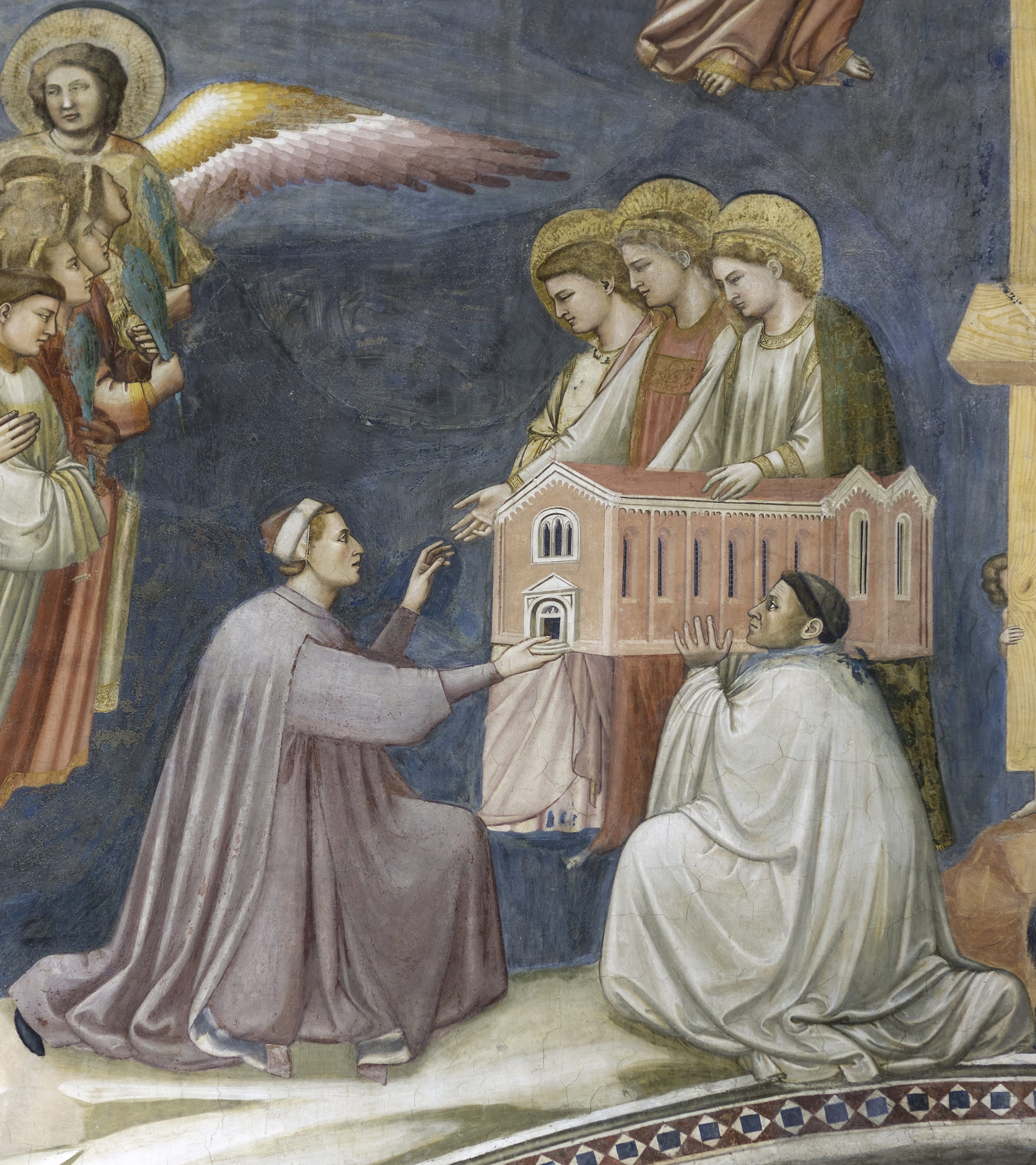 |
| Orvieto |
There is an attraction to Italy that's hard to put into words. Countless visitors to the sun-washed Mediterranean country have tried to describe what draws them back time and again to Italy, but their attempts never seemed adequate enough.
Umbria, the small landlocked region southeast of Tuscany, has that effect on me. Ever since my first trip to the small Umbrian town of Torigiano, as a wine judge, I've wanted to return as often as possible to poke around in every corner of Umbria.
In the purist form, Umbria is Italy. Cyril Ray, the eminent English wine writer of the 1960s, described Umbria as "typically or characteristically Italian...there is something of the essence of Italy in Umbria."
My first trip to Umbria was to attend the Banco di Assaggio, a competition of Italian wines, held at the Lungarotti inn and restaurant, Tre Vaselle, in Torigiano. It was a not-to-be-missed opportunity to taste Lungarotti wines, like Umbrian Sangiovese, Orvieto, Sagrantino as well as other Umbrian wines, where they are made.
The Umbrian take on Sangiovese lacks the fame of the Chianti version from nearby Tuscany. But Umbria has Sagrantino, a powerful red with a hint of exotic spice, and Umbria is home to the noteworthy Orvieto, a mineral laced white made from the Grechetto grape.
Various interpretations of all these Umbrian wines were pitted against other vini bianchi and vini rossi, judged by panels (called "juries" by the competition) of Italian and non-Italian wine journalists and Italian sommeliers.
Judging sessions were long and tedious, with extended discussions over the merits of certain wines and if they deserved a medal or not. Compromises were difficult , as the Italian judges frequently insisted on offering dogmatic opinions about Umbrian wines.
The rewarding pauses from this rigidity were excursions into the Umbrian countryside to historic towns like Assisi. My first experience at Assisi was with fellow judge, Martin Gersh, then the wine writer for "Vogue" magazine. Gersh was a middle aged New Yorker who had never traveled to Europe or been in an airplane.
Yet, he knew in detail every fabulous Giotto fresco in the lower church of the 13th century Basilica di San Francesco, in Assisi.

Armed with lira to feed the meters that give the viewer a very brief illumination of the frecoes, I listened to Martin describe each masterpiece with the enthusiasm of a young boy explaining a television cartoon to his father. It seemed that little had changed in the Umbrian landscape, from the 15th century, as depicted in the religious paintings we saw from that time.
Back at the tasting, my panel was tasked with evaluating Sangioveses, like that in Lungarotti Torgiano Rubesco. The Umbrian style is a standout for light cherry-herbal flavors and brisk acidity. No doubt, the Rubesco, with its high percentage of Sangiovese, was one of the wines we tasted.
We also had three flights of red blends of Sangiovese and Sagrantino, the latter a native Umbrian variety that adds firm tannins and a smoky note.
Assisi had fed my spirit, but a visit to Orvieto promised to slake my thirst for Umbria's best known white wine. An Umbrian original, Orvieto bianco takes its name from a town dominated by its duomo (cathedral), an imposing 14th century mix of Gothic and Romanesque architecture, featuring a stunning facade of white granite and black basalt stripes that wrap around the building.
Orvieto is justly famous for its white wine blend of Grechetto, Trebbiano, Verdella and Malvasia. The best Orvieto has a high percentage of Grechetto, giving the wine richness, good structure and a lingering minerality.
Lungarotti Torre de Giano is a blend of Grechetto, Vermentino and Trebbiano. Tuscany's Family Antinori, with its presence in Umbria, pairs Grechetto with Chardonnay in Cervaro della Sala.
Umbrian cooking reflects the robust nature of the landscape, people and wine. In "Vino Italiano," renown authority on Italian cuisine, Lidia Bastanich, offers up a recipe for the Umbrian dish, Spaghetti alla Norcina, a flavorful combination of pasta, olive oil, garlic, black truffles and anchovies, paired with a dry Orvieto.
With the competition completed and medals awarded, we judges moved to the lounge while the competition space was transformed back to the Tre Vaselle restaurant for the judges dinner. Bastianich was not there to cook for us, but the Lungarotti chefs prepared a sumptuous meal, featuring black truffles from Umbria.
Besides Tre Vaselle in Toriano, there are many other restaurants in Umbria to enjoy country cooking, like Buca di San Francisco in Assisi and Villa Cicona in Orvieto.
Next post: A Cabernet Collection
Leave a comment at boydvino707@gail.com



No comments:
Post a Comment
Note: Only a member of this blog may post a comment.